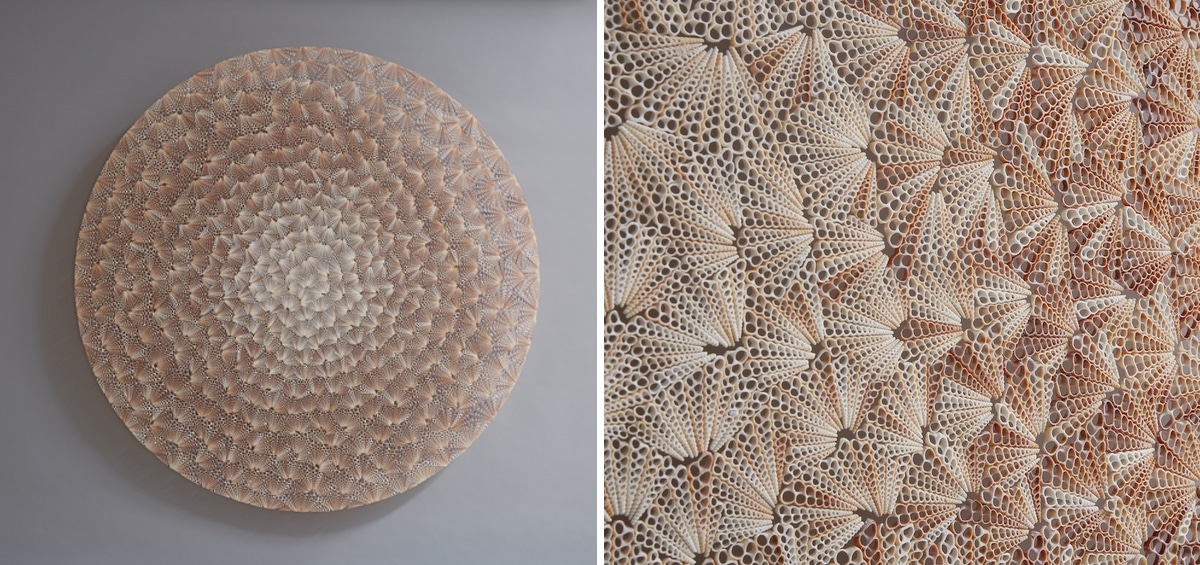
“Asabikeshiinh (Dreamcatcher) IV,” 2017. (Photo: Leslie Lau for Gallery FUMI)
British multi-media artist Rowan Mersh is attracted to the beauty of the natural world, using thousands of seashells to create mesmerizing contemporary sculptures. His experimental approach has him transforming ordinary objects into high art, with the results revealing close attention to shape, color, and geometry.
Whether it’s a wall hanging or a freestanding sculpture, each piece can take between two to six months to complete. Mersh scours the shore for everything from sea urchin spines to a wide variety of shells to build out his vision. Inspired by the diversity of what he sources, Mersh is also intrigued by the cultural significance of shells. Often, the traditions and symbolism associated with seashells informs the work he creates, forming the underlying narrative.
“Take my works within the Pithváva series for example—wall based sculptures created from tens of thousands of dentalium shells, sustainably harvested along the Pacific coast of Northwest America,” Mersh tells My Modern Met. “Dentalium shells have been used by First Nations and Native Americans as a highly valued trade item for thousands of years. Oral history of the Yurok, an indigenous Californian tribe, refers to Pithváva, a deity who created dentalium shells and spoke of their significance in terms of a ‘sacred wealth.’ Whilst articulating my vision of this deity in visual terms, these works also explore the notion of sacred wealth as an art form through a contemporary artisanal method of creation.”
In celebrating and embracing these unconventional materials, Mersh pulls out their inherent beauty. His finished sculptures invite viewers to enjoy the work as a whole, while also luring them closer to explore the fascinating details of each single shell. Though apparently uniform, the delicate shells show their unique character to attentive eyes willing to take in their subtle differences.
For Mersh, this individuality is part of the intrigue. He follows the direction of every shell, with the final sculpture taking cues from the shape of each component. “I attempt to respond to each shell on its own merit to emphasize these qualities; If a shell is curved I want to show this, working fluid angles or brush strokes into the surfaces I create.”
Rowan Mersh uses thousands of seashells to create mesmerizing contemporary sculptures.
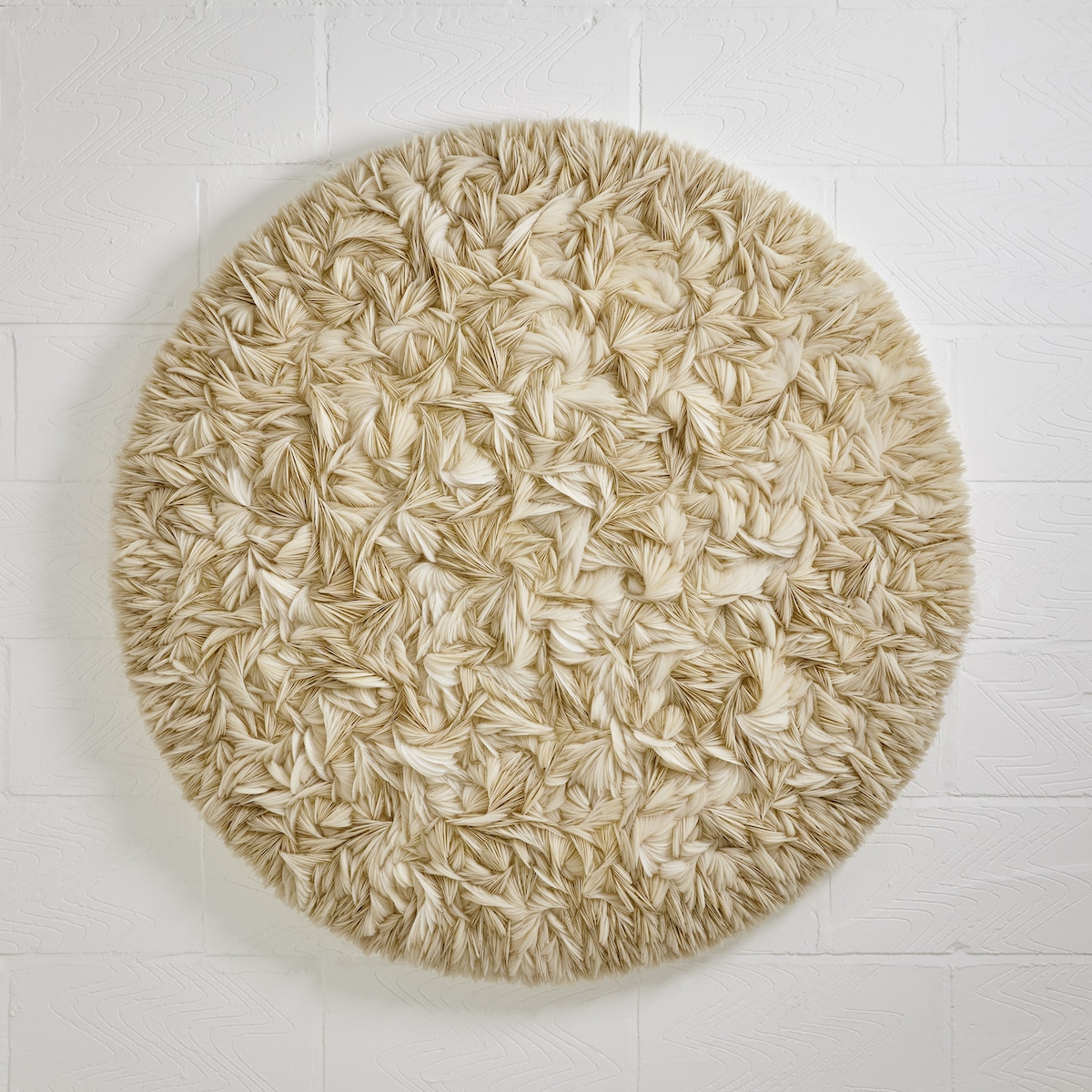
“Placuna Pro Dilectione Mea,” 2016. (Photo: Frankie Pike for Gallery FUMI)

“Placuna Pro Dilectione Mea” detail. (Photo: Frankie Pike for Gallery FUMI)
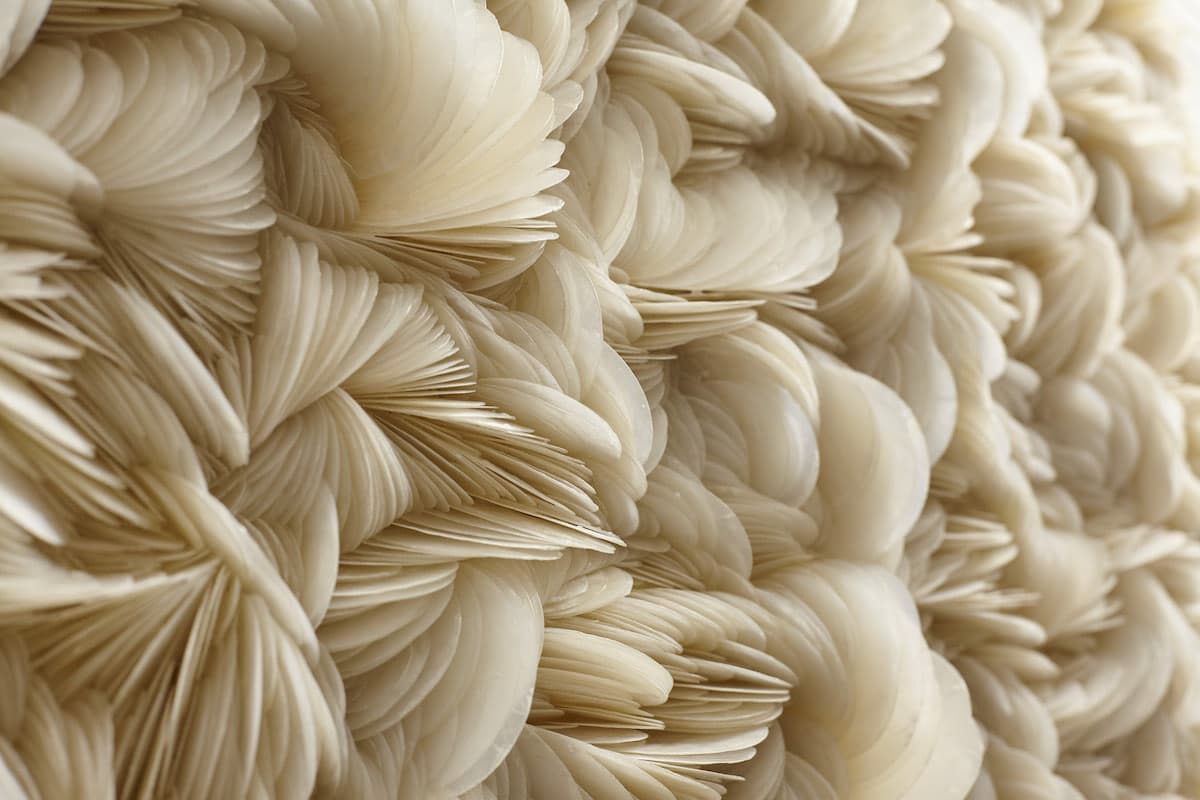
“Placuna Pro Dilectione Mea” detail. (Photo: Frankie Pike for Gallery FUMI)
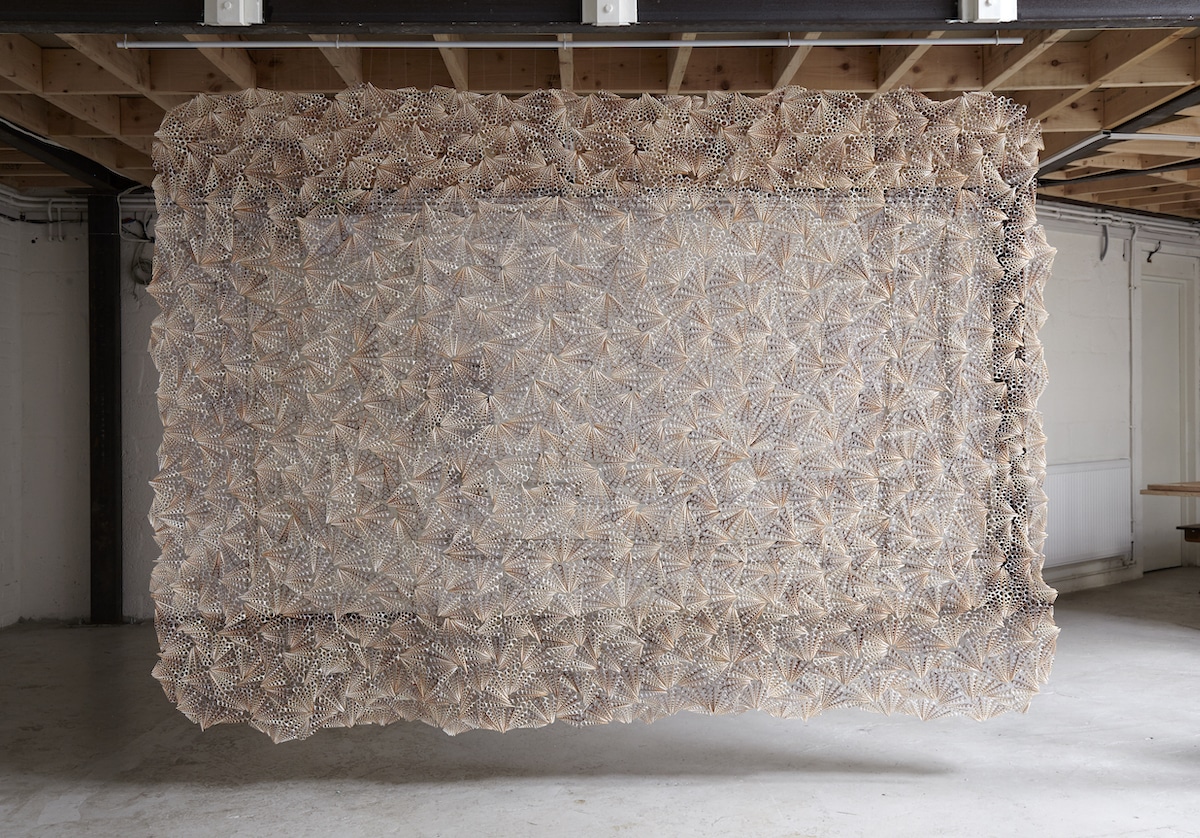
“Asabikeshiinh (Dreamcatcher) I,” 2016. (Photo: Frankie Pike for Gallery FUMI)
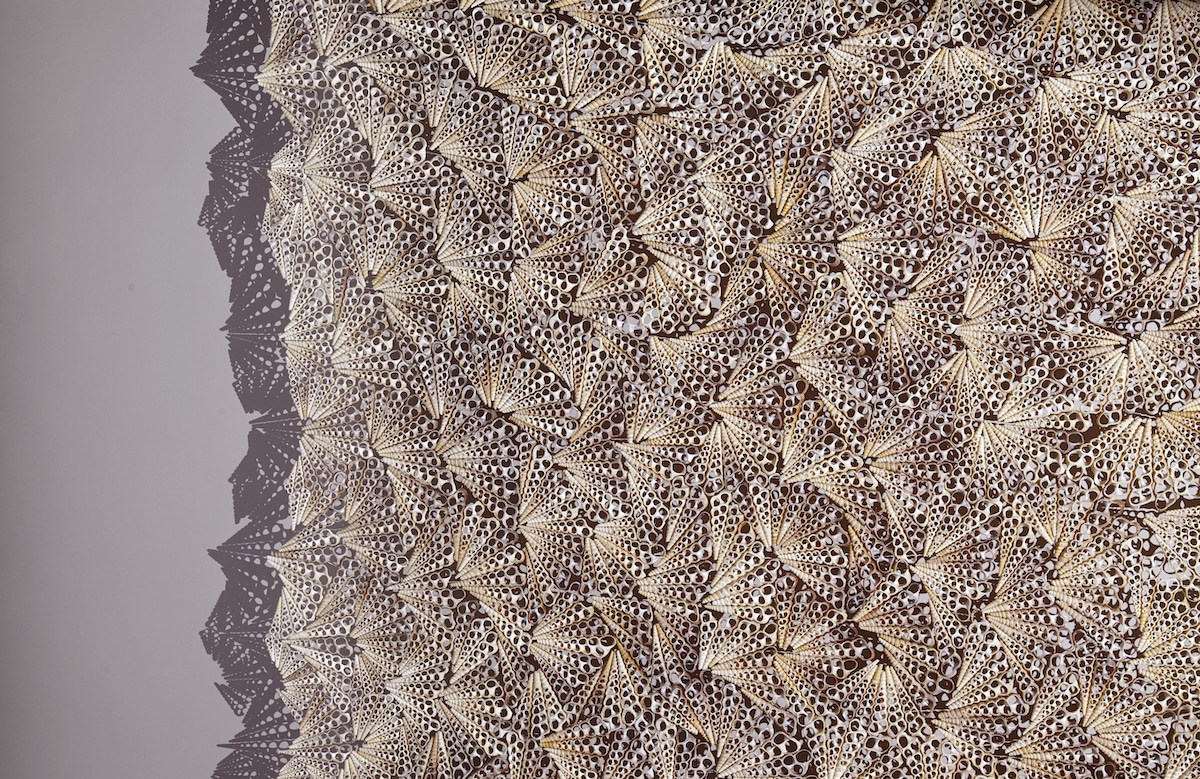
“Asabikeshiinh (Dreamcatcher) I” detail. (Photo: Frankie Pike for Gallery FUMI)
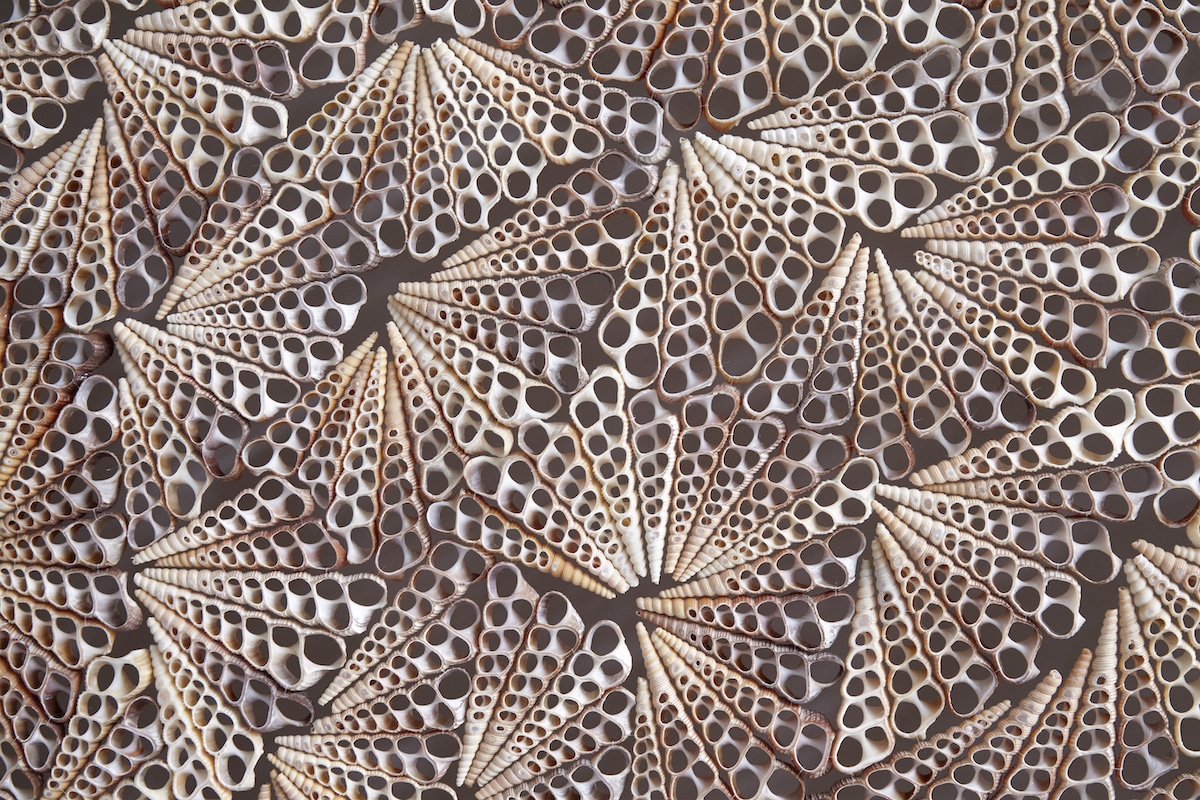
“Asabikeshiinh (Dreamcatcher) I” detail. (Photo: Frankie Pike for Gallery FUMI)
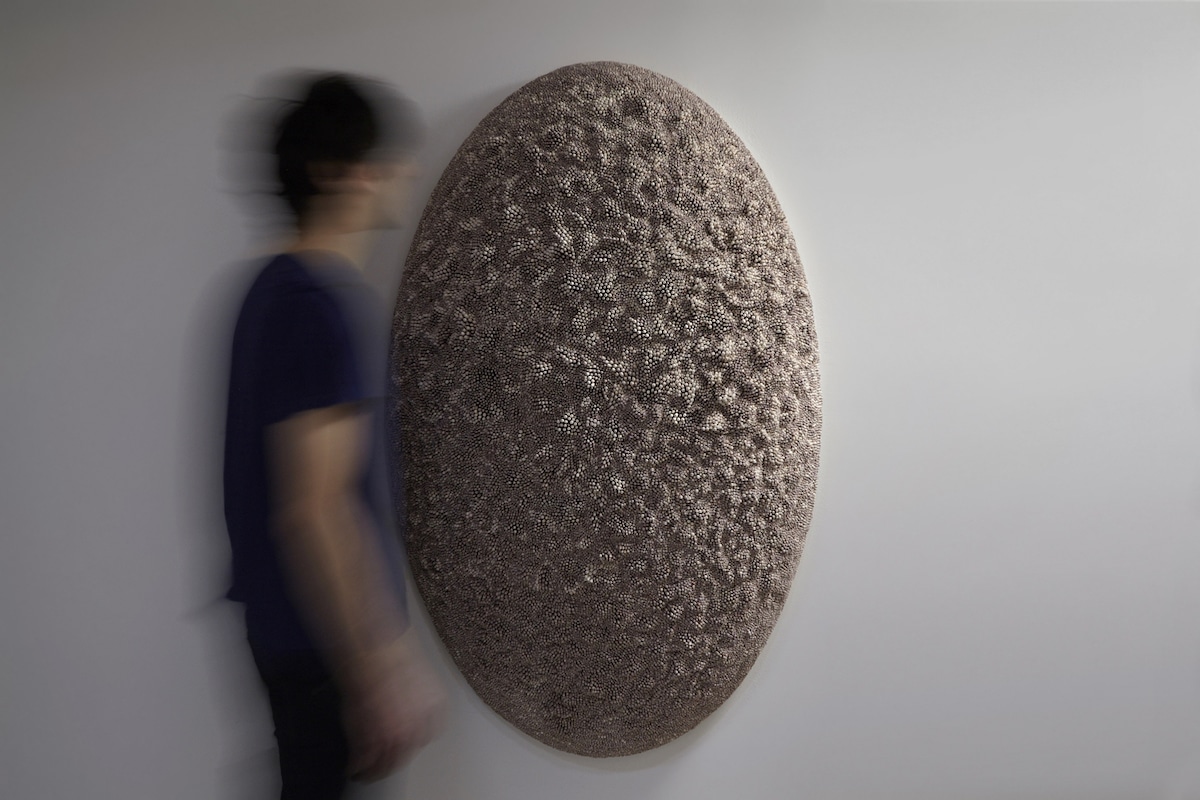
“Echinothrix Imago Sui,” 2017. (Photo: Frankie Pike for Gallery FUMI)
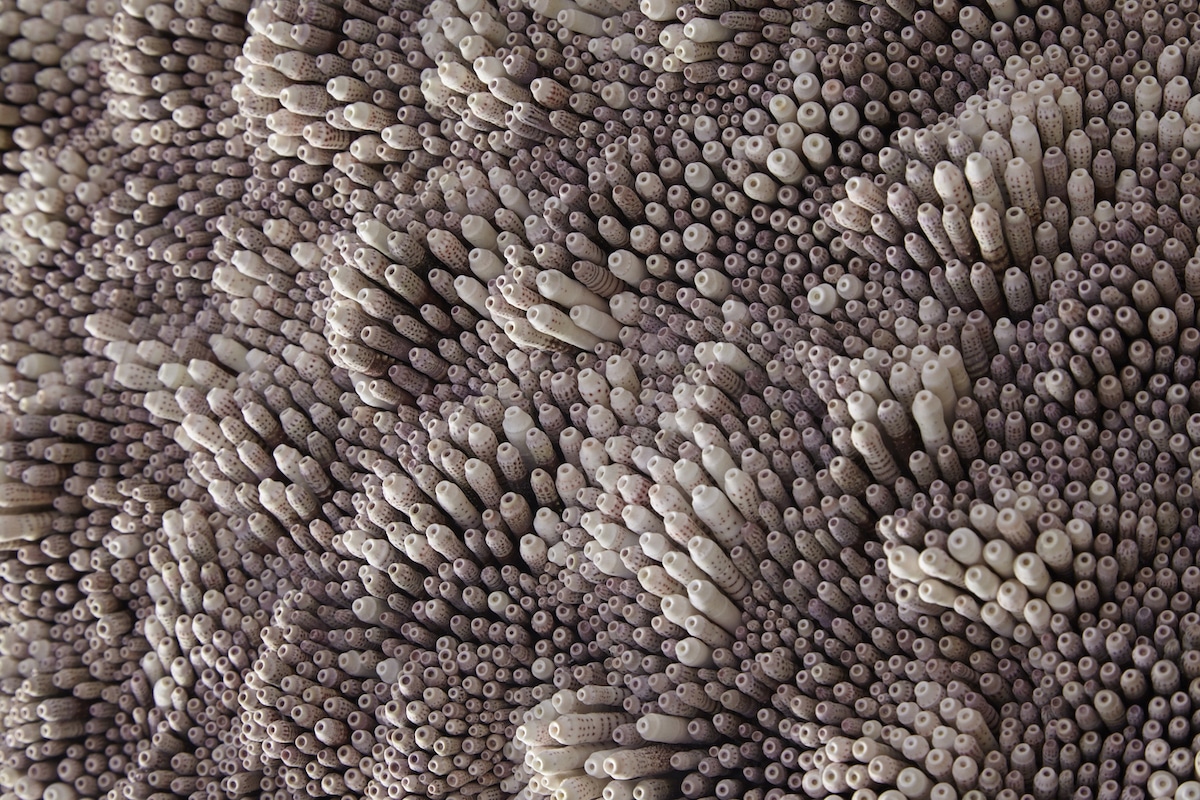
“Echinothrix Imago Sui” detail. (Photo: Frankie Pike for Gallery FUMI)
It can take between two to six months to complete each sculpture.
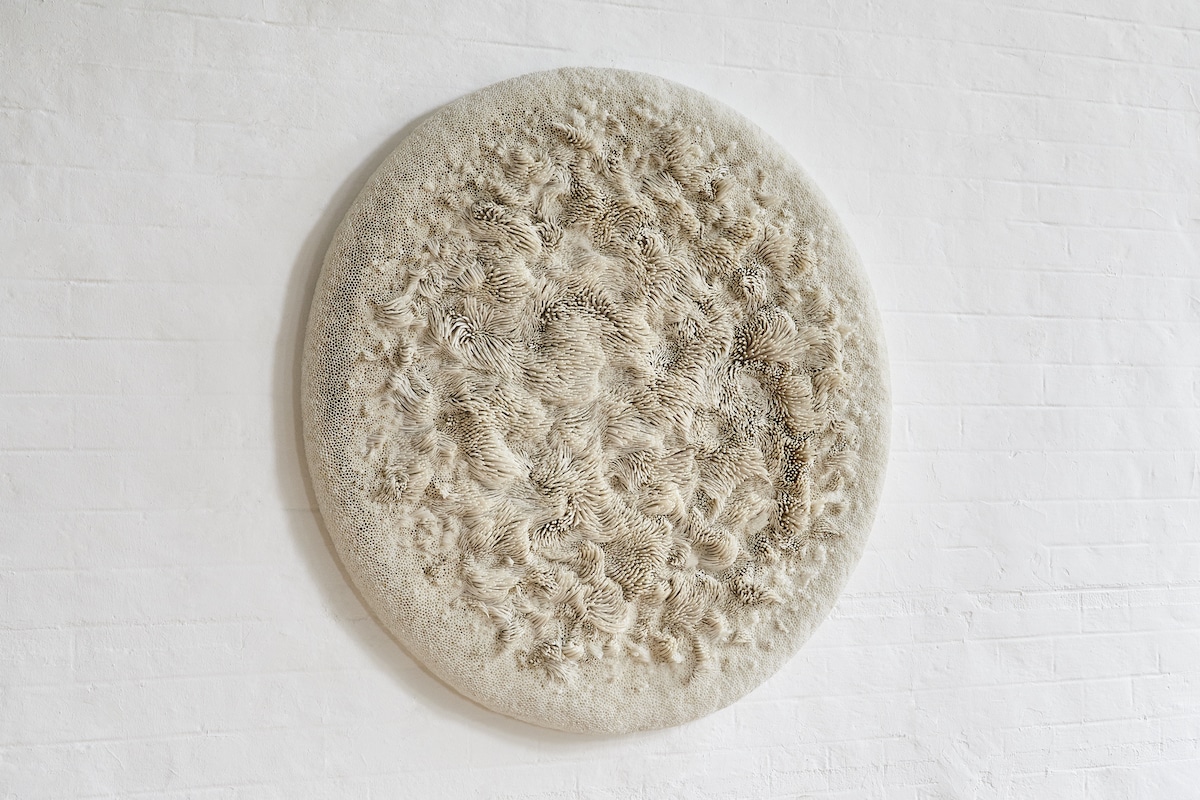
“Pithvava Affinitas,” 2016. (Photo: Frankie Pike for Gallery FUMI)
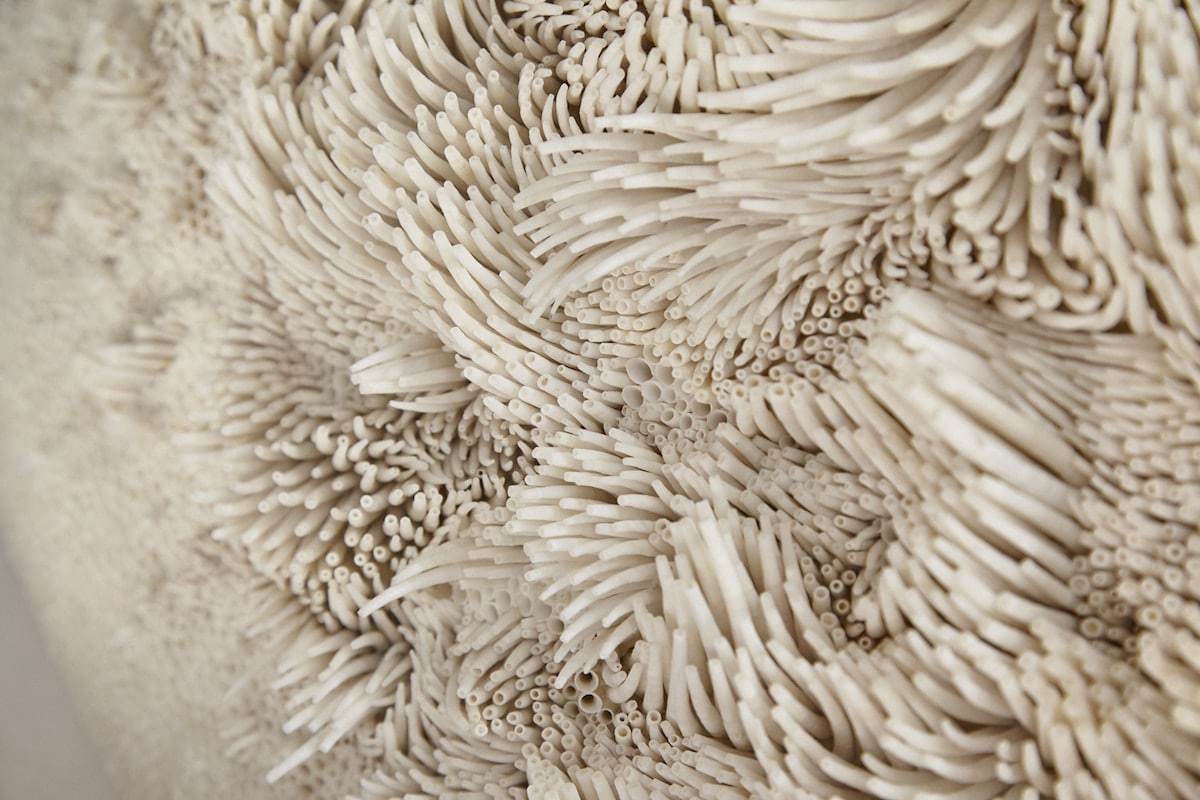
“Pithvava Affinitas” detail. (Photo: Frankie Pike for Gallery FUMI)
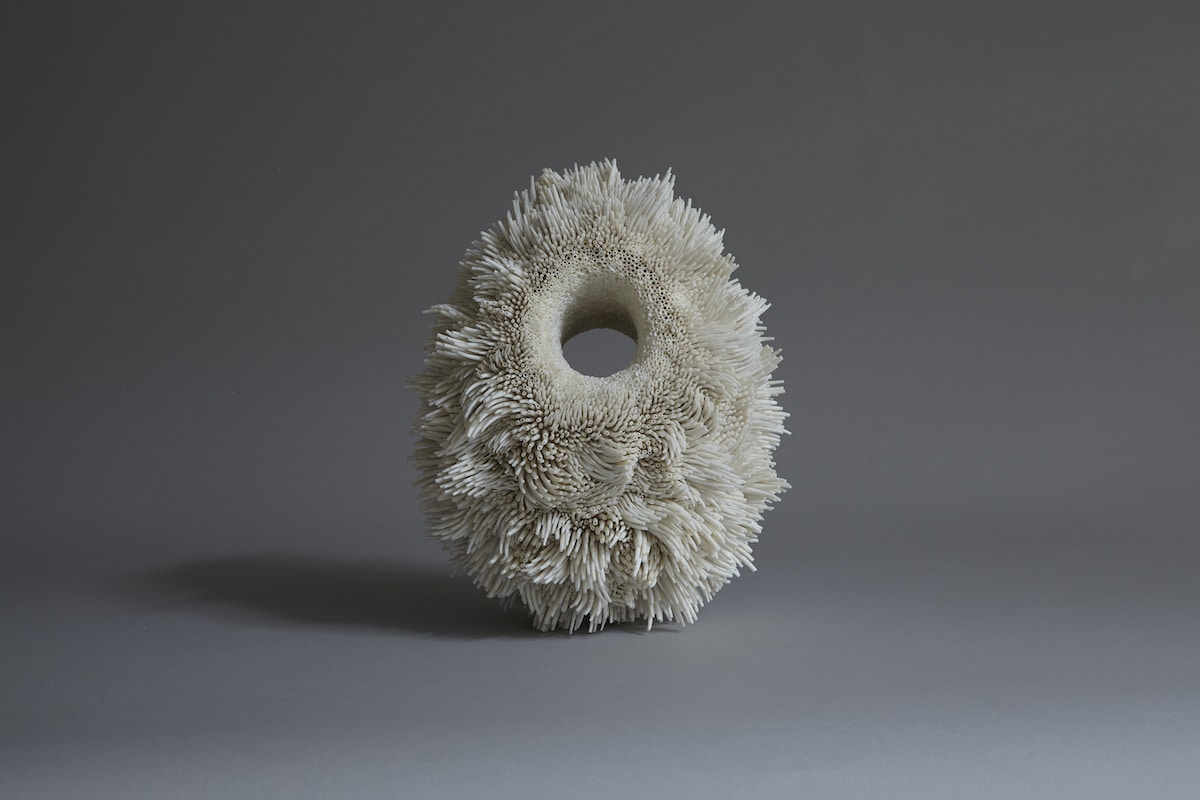
“Pithvava Praegressus,” 2017.
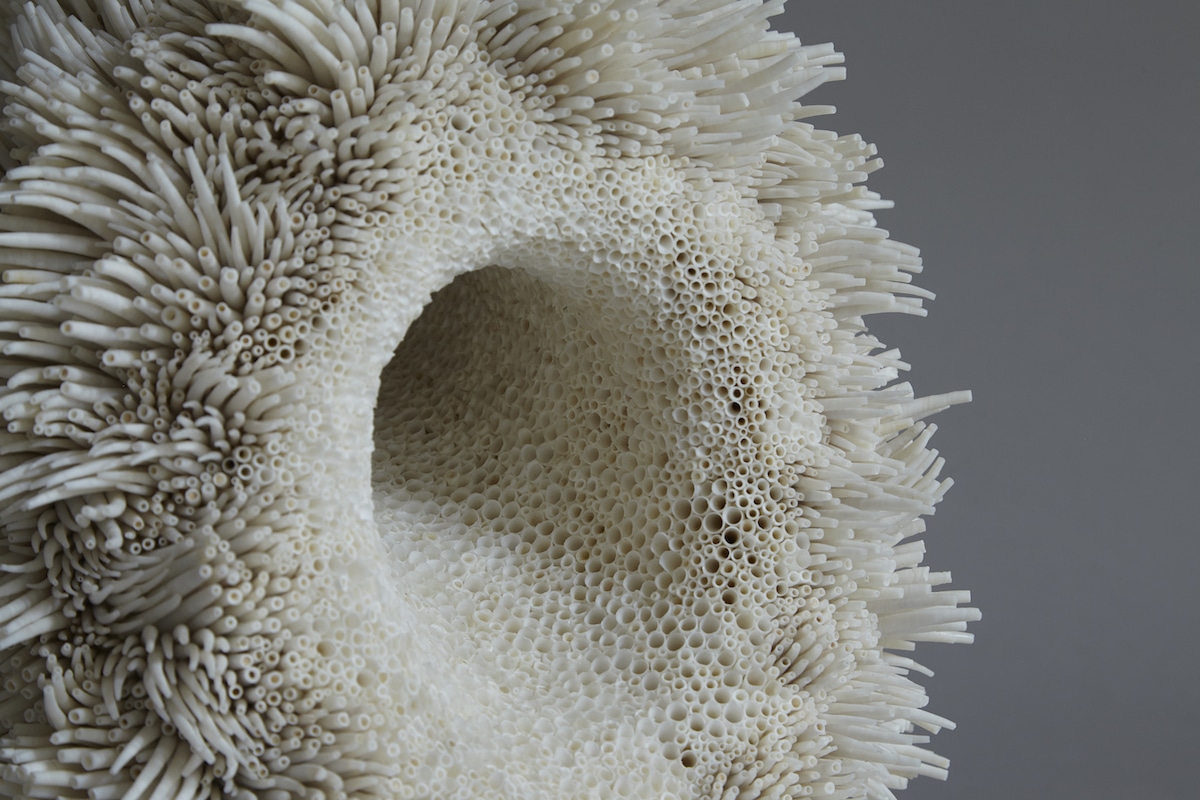
“Pithvava Praegressus” detail.
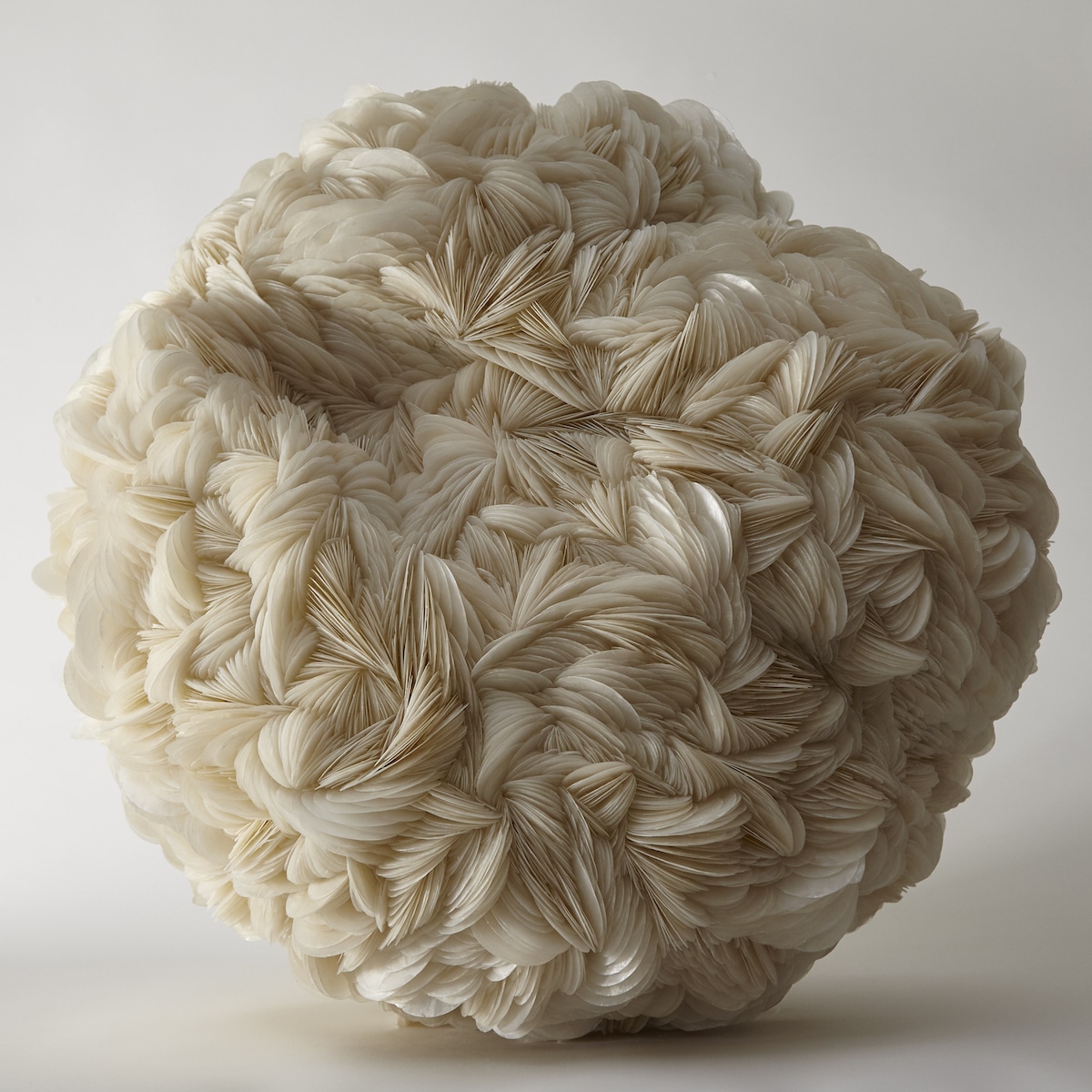
“Placuna Praegressus,” 2016. (Photo: Frankie Pike for Gallery FUMI)
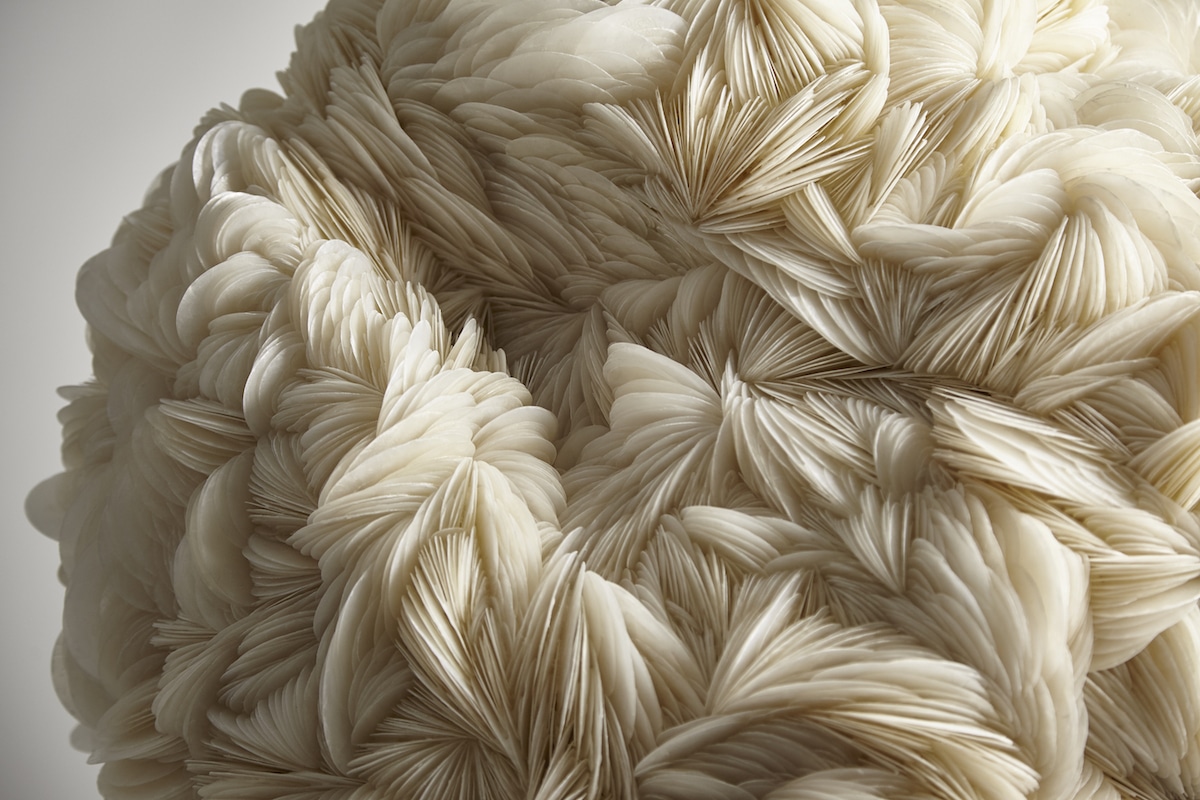
“Placuna Praegressus” detail. (Photo: Frankie Pike for Gallery FUMI)

“Pithvava Male,” 2013.

“Pithvava Male” detail.
